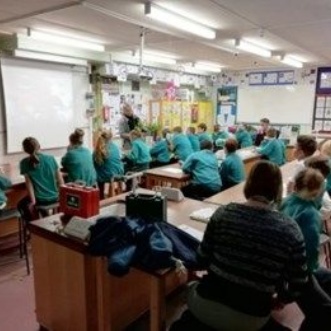Science Liaison Visit

On Monday 2nd December we were pleased to receive 28 year 5 and 6 students from Risby Primary School as part of our Primary Science Liaison initiative. In recent times Risby had visited us at the LSC, so it was nice that they could now see science in action at Beetons Way.
We always choose a topic that the students are currently studying at Risby and this term it is plants and plant reproduction. The session began with a short presentation on the evolution of plants, from the very first living organisms that arose about 3.5 billion years ago right up to the present day. It was interesting to note that flowering plants evolved only very recently on the timescale of the evolution of plants in general, arising only about 150 million years ago!
The rest of the session was led by Mrs Green who had decided on a practical exercise to examine the structure of a flowering plant. Although not the best time of year to examine flowering plants, lilies are readily available so it was decided to provide each student with a flower head that they could dissect in order to identify all its parts. A friendly local florist had donated 30 heads of the Alstroemeria lily for us to work with. The Risby students proved themselves to be very adept at dissecting the flower heads and arranging all the component parts. Mrs Green provided teaching and resources to enable the students to identify all the flower parts and write about their structure and function, with the students becoming familiar with terms such as sepal, petal, anther, stigma, style and ovary. At the end of the session the students taped their flower parts to a special worksheet so they could take the results of their dissection home with them.
One fascinating fact came to light – Mrs Green asked the students to count the number of each type of structure in the flower head and, for example, they found that there were 3 sepals, 3 petals and 6 anthers. This is not by chance for it turns out that flowers like lilies have such parts in threes or multiples of three. Other flowers may have different multiples: for example, roses have such parts in multiples of five. Mathematics in Nature!
